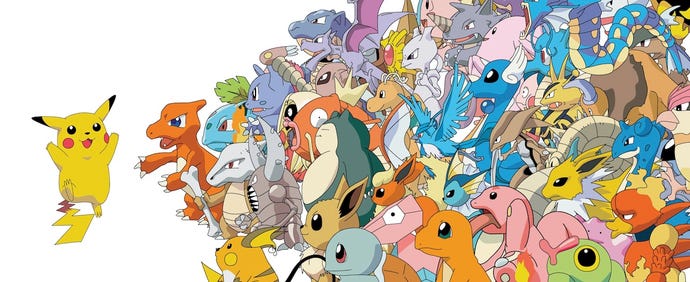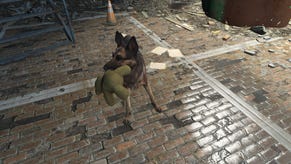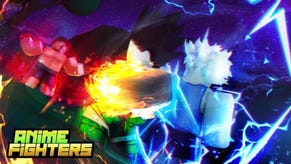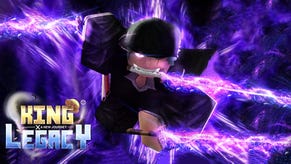Pokemon X and Y Guide: Best Starters, Strategies, What to Do, Where to Go
Need some help with Pokemon X and Y? Here's what you need to know to get up and running quickly. Where to begin, what to do, where to go, super training -- and what you can create with mega evolutions!
Pokemon X and Y are finally here. Whether you're a dyed-in-the-wool Pokefan or a newcomer hoping to discover what all the fuss is about, almost everyone could use a little advice on how to tackle these deceptively complex role-playing games. Which starter(s) should you pick? How does Mega Evolution work? And what the heck is an Effort Value, anyway? Here's what you need to know to get up and running - and we've tried to make this relatively spoiler-free, so not to ruin too many surprises.
Should you play Pokemon X or Pokemon Y?More than anything else, Pokemon has always been a game about choices. X and Y are no different. From your preference in starter Pokemon to move selection and team composition, this series offers a ludicrous number of options for differentiating your squad from the competition.
But let's not get ahead of ourselves. The first big decision you'll encounter comes well before you even start the game: Which version to play? As usual, certain Pokemon and items only appear in either X or Y, but the story, world map, and dungeon layouts remain largely the same across both games. You shouldn't have much trouble getting strangers to part with some of the more common version exclusives via wifi trades, but I wouldn't expect such luck with the numerous one-of-a-kind Pokemon and Mega Evolutions assigned to one game or the other.
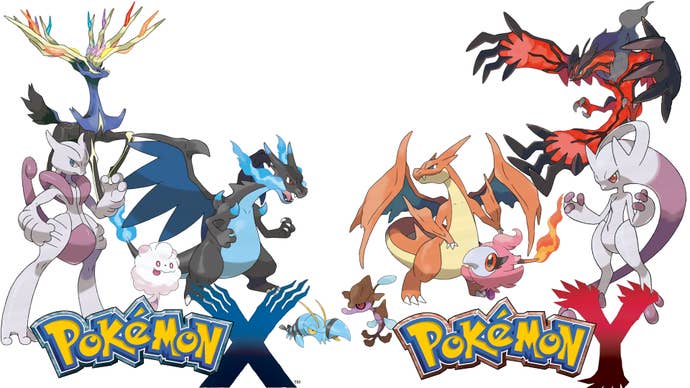
First of all, you'll only be able to find the legendary stag Xerneas in Pokemon X. Likewise, the winged monstrosity Yveltal is limited to copies of Pokemon Y. Yveltal sports the Flying and Dark types, while Xerneas shows off the new Fairy type. Both are fairly lethal in their own right.
A couple of new forms for classic Pokemon are also split between the versions. The items required to turn Mewtwo into its two new Mega Evolutions come in either X or Y flavors, as do the stones for Mega Charizard X and Y. You can always try trading for them, of course, but, because each game contains just one of these items per playthrough, you'd have make a pretty persuasive offer.
In addition, X and Y contain a number of more common Pokemon -- both brand new species and old favorites -- that are specific to one version or the other. The poisonous sea dragon Skrelp and its evolutionary line, for example, only appear in the wild in Pokemon Y, while the pistol shrimp-like Clauncher does its business in Pokemon X. Most of these exclusives should be easy to come by via online trades, however, so don't let them affect your purchasing decision too much.
Pokémon X exclusives- Staryu and Starmie
- Pinsir
- Houndour and Houndoom
- Poochyena and Mightyena
- Aron, Lairon, and Aggron
- Sawk
- Swirlix and Slurpuff
- Clauncher and Clawitzer
- Xerneas
- Shellder and Cloyster
- Heracross
- Larvitar, Pupitar, and Tyranitar
- Electrike and Manectric
- Purrloin and Liepard
- Throh
- Spritzee and Aromatisse
- Skrelp and Dragalge
- Yveltal. Dark

Once you've settled on either X or Y, you'll have to choose between the Kalos region's three starting Pokemon: Fennekin, a Fire type fox with a focus on the Special Attack stat; the fast-yet-frail Water type frog, Froakie; and the bulky Grass Pokemon Chespin. Shortly thereafter, Charmander, Bulbasaur, and Squirtle from the original Pokemon Red and Blue become available as well, along with the items required to Mega Evolve your pick of the three.
They're both tough calls for sure, but keep in mind that early adopters also have access to a special Torchic, the Fire type starter from Pokemon Ruby and Sapphire. If you're looking to roll with a balanced team and intend on downloading Torchic while it's available, you may want to consider sticking to Water or Grass types for potential partners. Also, depending on whether you go with Chespin, Fennekin, or Froakie, you'll ultimately receive one of the Kalos starters you didn't select as a gift, anyway. Basically, try not to worry about your choices at the outset too much - there are no wrong answers here.

Not long after selecting your starters, you'll meet an NPC offering your pick between two fossils. One of these, the Jaw Fossil, turns into the T. rex Pokemon Tyrunt and its evolution Tyrantrum, while the other, the Sail Fossil, becomes the Ice/Rock type Amaura and, eventually, Aurorus. On one hand, Ice Pokemon like Auroros are rare for most of X and Y, and they excel at bringing down Grass, Flying, Ground, and Dragon types. On the other, Tyrantrum punches holes in teams like a wrecking ball with teeth. You really can't go wrong with either, though.
Learning the basicsNow that you've squared away all the important decisions, it's time to actually play Pokemon X and Y. If you're new to the franchise, I'd recommend taking a long, hard look at the type effectiveness chart below:
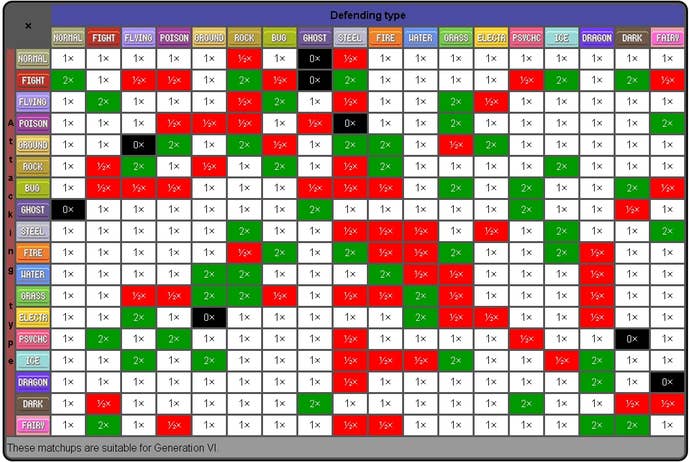
Some of this stuff makes enough sense that you won't likely need to reference the chart too often. It seems pretty obvious that an Ice attack would be half as effective against a Fire target as it would be on a Normal type, after all. But the logic behind other matchups - Dark types being weak to Bug, for instance - isn't always so transparent. For that reason, I'd suggest keeping a copy of the chart handy until you've internalized the ups and downs of every type.
Hardcore fans will notice a couple big changes to existing type matchups, as well. Steel types no longer shrug off Ghost and Dark moves, which means formerly dominant Steel/Psychic Pokemon like Metagross and Bronzong now have all sorts of new threats to worry about.
Furthermore, X and Y's addition of Fairy types finally gives players a more reliable way to shut down powerful Dragon Pokemon. And while they're also great for dealing with Dark and Fighting types, Fairy's outright immunity to Dragon attacks provides a tremendous advantage against stuff like Outrage-spamming Haxorus and Garchomp. Recruit one immediately.
Speaking of which, training a dedicated capture Pokemon will make your life in X or Y a lot easier. As soon as you get the chance, teach one of your monsters the move False Swipe. This attack will always leave the opposing Pokemon with at least one point of health, thereby increasing your chances of trapping them in a Pokeball. Pokemon who can spread status ailments like Sleep or Paralysis help boost capture rates, as well.
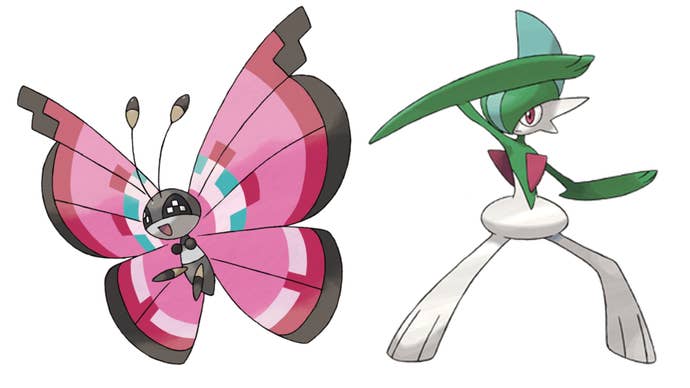
Tempted as you may be to spend all your cash in Pokemon X and Y's clothing stores, make sure to keep yourself stocked on Pokeballs at all times. You'll need lots of them, they're cheap, and the shops will even give you a free Premier Ball for every ten Pokeballs you purchase. Fashion can wait. That random shiny Psyduck will not.
Take your time exploring every nook and cranny on the routes between towns. Not only will you find a lot of hidden items that way, but you'll also have more luck encountering some of the rarer Pokemon in each area. While you're at it, be sure to note any optional paths that require field moves you don't yet possess -- attacks like Surf, Strength, Cut, and Waterfall double as puzzle solutions in the overworld, and, similar to a Metroid or Zelda game, you'll want to backtrack as you gain new abilities to uncover secrets.
If you're interested in min/maxing your favorite Pokemon's stats, X and Y's Super Training feature provides a streamlined option over the confounding systems from prior generations. Rather than fighting specific Pokemon hundreds of times over in order to accumulate invisible stats called Effort Values, Super Training allows you to custom tailor a Pokemon's capabilities by playing simple minigames. Just be sure to finish Super Training your Pokemon before engaging in many battles, otherwise they might gain unwanted stats in the process.
Generally speaking, you're going to want to focus on boosting two or three stat categories for any given Pokemon. Physical attackers obviously have little use for the Special Attack stat, and a Pokemon designed solely to tank hits probably won't need any investment into its Attack or Speed. Of course, part of the beauty of this system is your Pokemon are only as specialized as you want them to be, so feel free to try out the goofiest stat spreads you can think of.
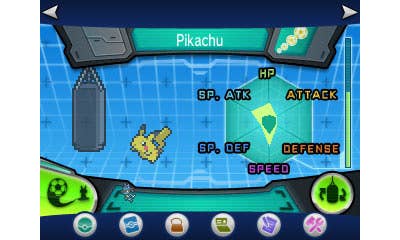
Besides Fairy types and Super Training, Pokemon X and Y introduce one other big addition: Mega Evolution. Upon reaching a certain point in the story, you'll unlock the ability to Mega Evolve any Pokemon in your party equipped with their corresponding Mega Stone. These secondary forms are only active during battle, but they drastically alter a Pokemon's stats, abilities, and even typing in some cases.
The games limit you to one Mega Evolved monster per six-Pokemon party, so it's another tough choice on top of the hundreds of other decisions in the game. On the plus side, though, I haven't found many reasons not to Mega Evolve a Pokemon that's capable of doing so. The stat gains and strategic opportunities are just too great to ignore.
Currently known Mega Evolutions include the following Pokemon:
- Venusaur
- Blastoise
- Alakazam
- Gengar
- Kangaskhan
- Pinsir
- Gyarados
- Aerodactyl
- Ampharos
- Scizor
- Heracross
- Houndoom
- Tyranitar
- Blaziken
- Gardevoir
- Mawile
- Aggron
- Medicham
- Manectric
- Banette
- Absol
- Garchomp
- Lucario
- Charizard (two exclusive versions)
- Mewtwo.
I'll go ahead and wrap this thing up with a quick rundown of the important NPCs and limited-time events that dot the world of Pokemon X/Y. Be on the lookout for this stuff as you explore Kalos:
- A Coumarine City resident offers select TMs (the items used to teach Pokemon new moves) as a reward for correctly answering her daily quizzes. She has four or five different TMs in total, so don't forget to check back with her until you've won them all.
- From 8 PM to 9 PM every night, the sun aligns just right with a large monument in Anistar City, scattering light across Kalos and revealing otherwise invisible Mega Stones in the process. You'll only be able to collect these once you've spoken with Professor Sycamore after completing the main story, though.
- A man at the stone shop in central Lumiose City sells Mega Stones for the starting Pokemon from Red and Blue. His asking price is a bit extreme at first, but it appears to decrease over time.
- The Pokemon Day Care on Route 7 can level up two of your Pokemon for you, but it's also good for breeding. Just drop off a male and female Pokemon and, if they're compatible, you'll have an egg waiting for you in no time.
- You can catch Dittos in the Pokemon Village area near the end of the game. These guys will breed with anything when left at the Day Care, eliminating the need for male and female Pokemon of the same egg group.
- The Friend Safari in Kiloude City fills rooms with a randomly generated set of up to three Pokemon. The number of rooms available to you depends on the number of friends registered in your 3DS. In some cases, Friend Safari Pokemon aren't native to Kalos, and, on occasion, they even come with unusual abilities.
- Another Kiloude City attraction, the Battle Maison, provides a post-game challenge against trainers matched to your level. Like the Battle Subway from Pokemon Black and White, it rewards successive victories with a special currency used to purchase TMs and other competitive items.
- A purple-haired fellow in the Kiloude City Pokemon Center can judge your Pokemon's overall potential. Essentially, every individual Pokemon within the same species has a possible range for each stat, and this dude will give you a rough idea of where your Pokemon fall in that range. The guy isn't as precise as some of the stat calculators you'll find on the internet, but he's a valuable resource nonetheless.
- The Camphrier Town Pokemon Center houses the Name Rater, who will let you change your Pokemon's nicknames totally free of charge. Pokemon received in a trade, however, are stuck with whatever name they've got.
- Dendemille Town's Move Reminder and Move Deleter will help your Pokemon recover forgotten moves and forget unwanted ones, respectively. This comes in handy once you're ready to ditch junk attacks like Strength and Cut for something more useful.
- Rocks inside Glittering Cave to the east of Ambrette Town often contain the fossils of Pokemon from earlier games in the series. Bust them open with Rock Smash and you can recover Pokemon from those fossils at the lab back in Ambrette.
